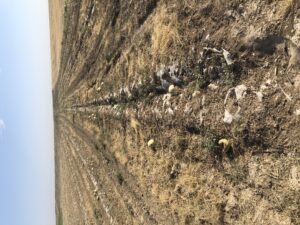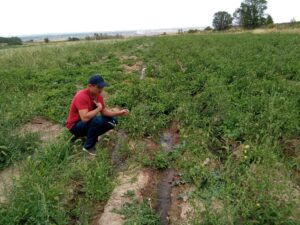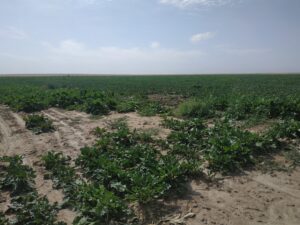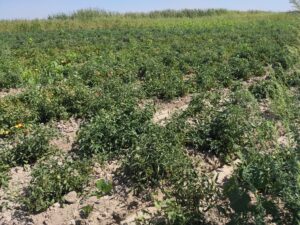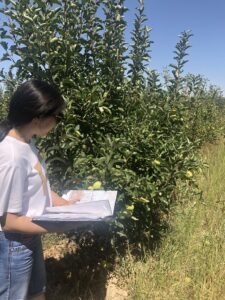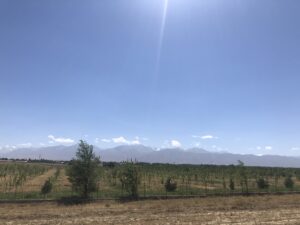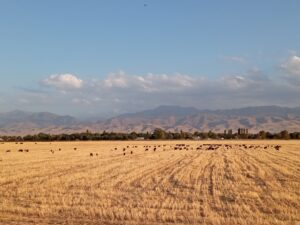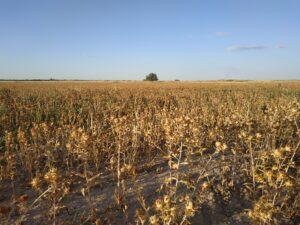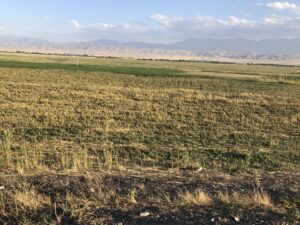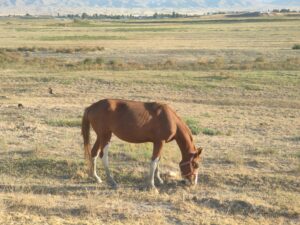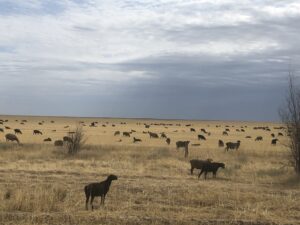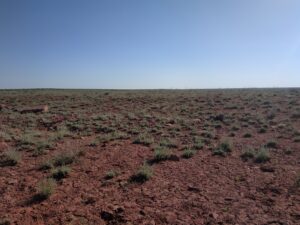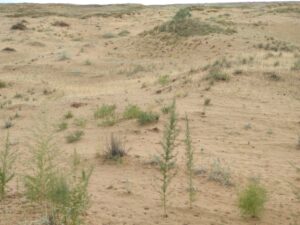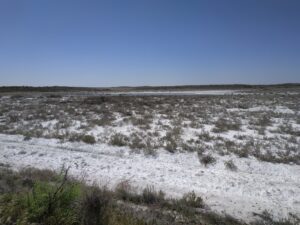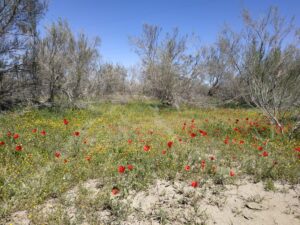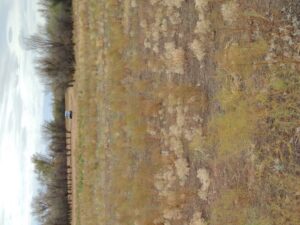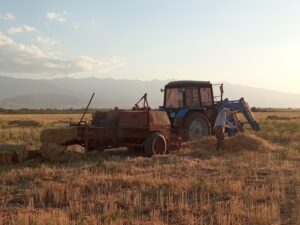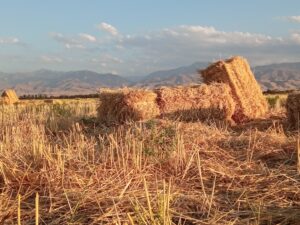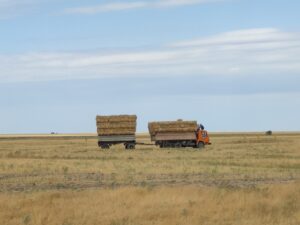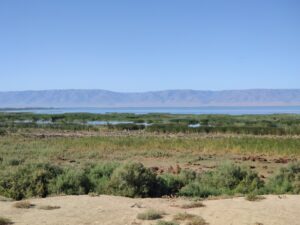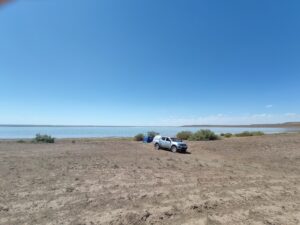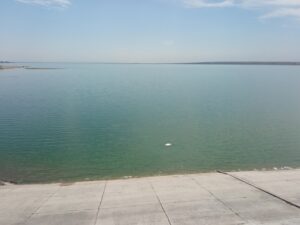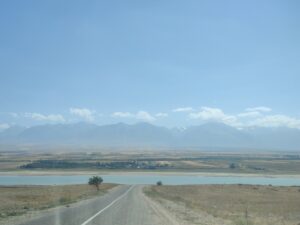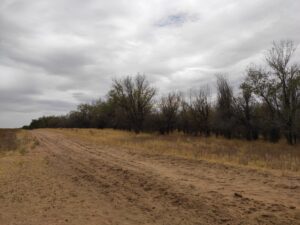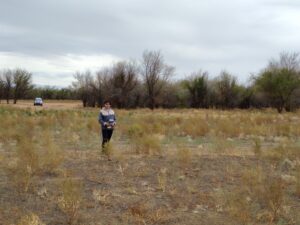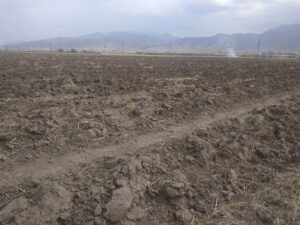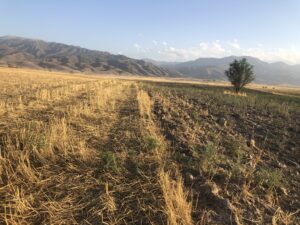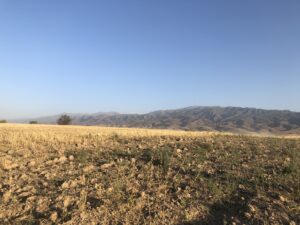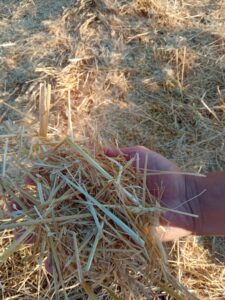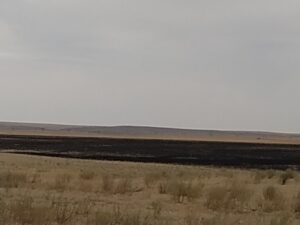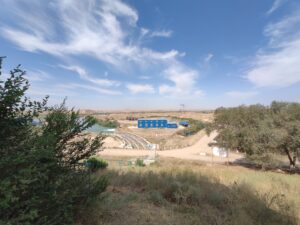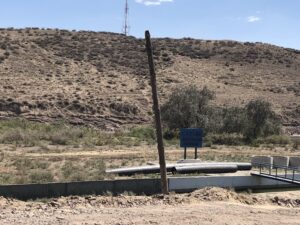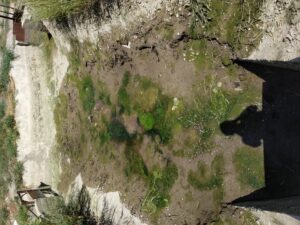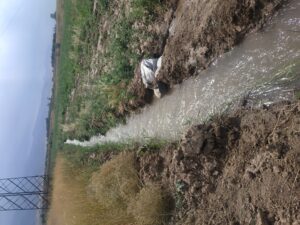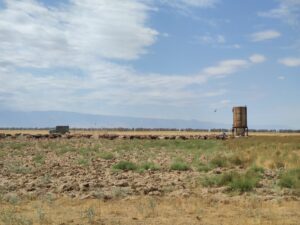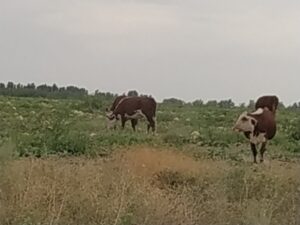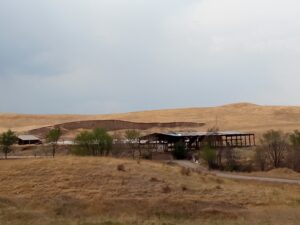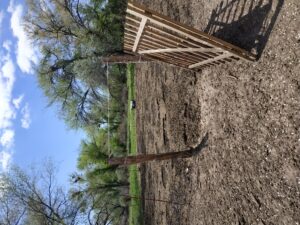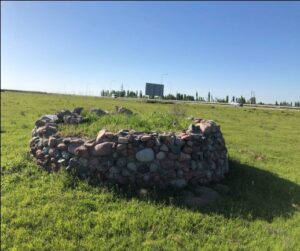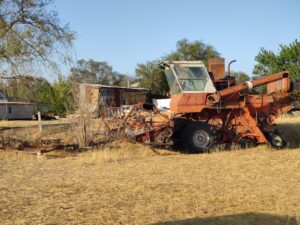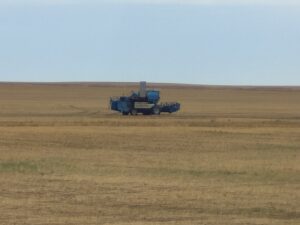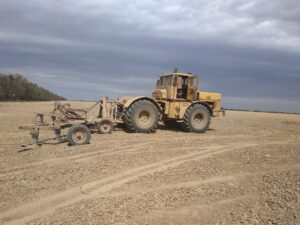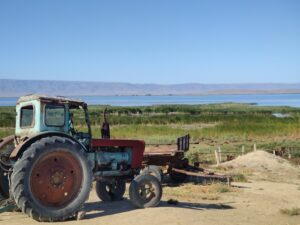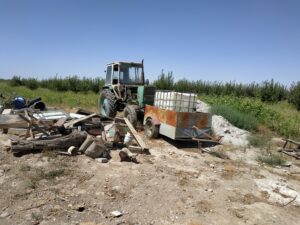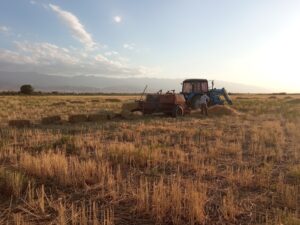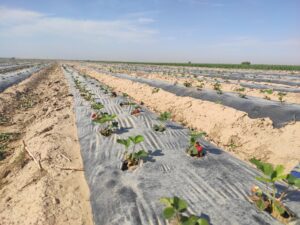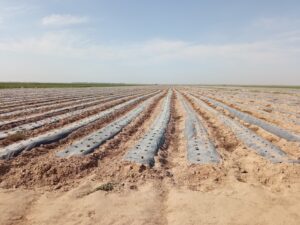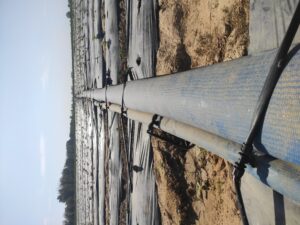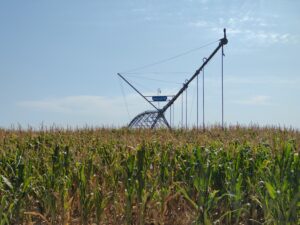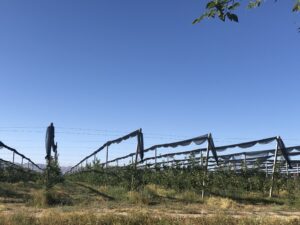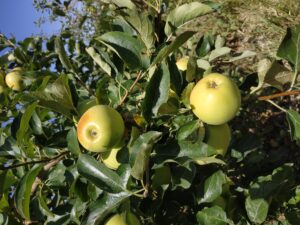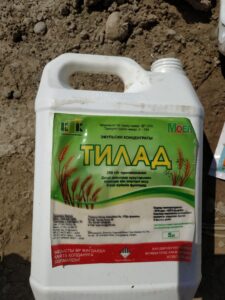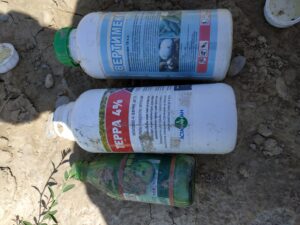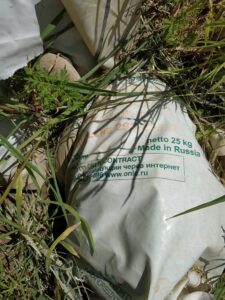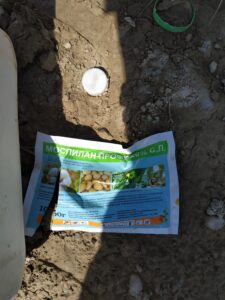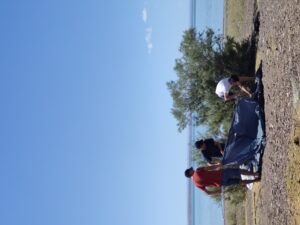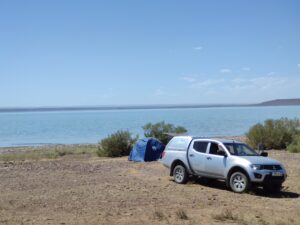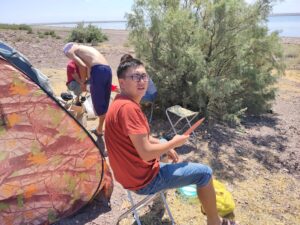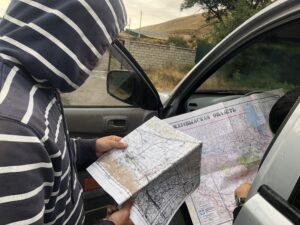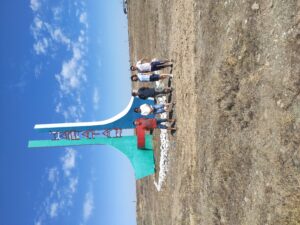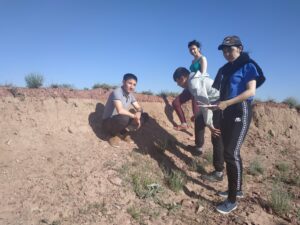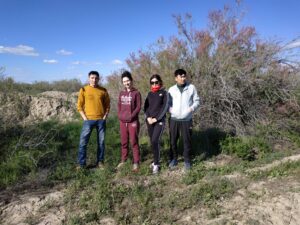The composition of the research team: senior researcher Krylova V. S., researcher Tuletayev A.B., junior researcher Kuderin A. A., junior researcher Omarov A. N., junior researcher Aldazhanova G.B.
Period of field researches: from August 13 to September 12, 2020.
The purpose of the research: Conducting field researches for the assessment of the land and water resources of Zhambyl region.
Tasks:
- researching of agricultural lands that are homogeneous in terms of natural characteristics and the nature of economic use to identify functional zones, taking into account the limitation of water resources;
- establishing the boundaries of agricultural development territories with special groups of environmental protection measures, depending on the demonstration of degradation processes in them;
- taking into account socio-economic indicators for creating a scheme of management of agricultural lands.
A group of landscape scientists of JSC "Institute of geography and water security" in the period from August 13 to September 12, 2020 conducted a field survey of land and water resources of Zhambyl region.
The 2020 routes were developed with aim to survey lands used in crop production and livestock breeding and to monitor agricultural lands in all areas of the region those have been surveyed since 2018. Thus, the lands involved in agriculture, are located in different natural conditions - semiarid plains, river complexes, sand massifs and foothills.
The tool for optimizing the management of agricultural lands in the Zhambyl region is the functional zoning of the territory, which is its differentiation in 3 zones, allocated for a specific purpose according to quantitative and qualitative criteria for the implementation of specific functions. According to the main indicators of the sustainability of landscapes to agricultural impact (agro-climatic characteristics, the nature of the relief, the thickness of the soil horizon, the degree of soil salinity, etc.), landscapes were identified that can withstand a large load when carrying out agricultural activities in them, as well as unstable landscapes, requiring special measures when using them in agriculture.
Relatively stable landscapes of better and good quality are included in the functional zone of economically expedient use of landscapes, uniting subzones: a) with an intensive regime of agricultural use of landscapes of better and good quality; b) with an extensive regime of use of landscapes of good, as well as good and average quality.
Landscapes of the best and good quality with an intensive agricultural use are concentrated in the southern, southwestern and southeastern parts of the Zhambyl region, confined to the foothill plain and low mountains of the Karatau, Kyrgyz Alatau, Kindiktas, Zhetyzhol and Kastek ridges, also the valleys of the Shu and Talas rivers.
Growing vegetables and melons and gourds (near villages Zhetybai, Zhenis, Bayzak district)
Growing fruit plantations (Bayzak and Merke districts)
In an extensive regime, the use of landscapes is carried out without special investments per unit area, with insufficient use of new technologies, with low volumes of production, the growth of which is possible due to the expansion of the used lands.
Safflower fields before and after harvest (T. Ryskulov district)
Unstable landscapes of desert and semi-desert foothills of medium and below average quality are united by the zone of ecologically adaptive use of landscapes. It is recommended to use them as pastures, in places - for irrigated areas, with the obligatory introduction of restrictions on the intensity of land exploitation in order to exclude negative environmental consequences;
Pastures with different types of livestock (T.Ryskulov district)
Pre-sand and sand zone of Moyinkum (T. Ryskulov and Moyynkum districts)
The hay lands of the Zhambyl region are concentrated in the floodplains of the Shu and Talas rivers, around lake depressions and numerous natural relief depressions and are represented by undulating complexes of floodplains and terraces above the floodplains with reed and herbal vegetation on marsh soils, cereal, herb-gramineous and cereal-licorice on meadow and meadow - swampy soils, shrub soils in combination with turanga sparse forests on meadow desertified soils, halophytic herb-grass, annual solyanka-karabarak and carabarak-sarsazan on common and meadow salt marshes.
Making hay in natural hayfields (Shu and Bayzak districts)
Straw harvesting in the fields after harvest (north of Maldybai village, T. Ryskulov district)
The zone of use of landscapes in the conservation mode is occupies the predominant part of the territory of the Zhambyl region and is represented by desert unstable and very unstable landscapes of ground, stratal and aeolian plains, with low and very low agricultural production quality. This zone is located mainly in the Moyynkum and Sarysu districts in the north of the region, within the Beptakdala and the Moyynkum sands, represented by desert landscapes of basement, stratal and aeolian plains. Complexes of gray-brown solonetzic soils and solonetz soils in their natural state are not very suitable for agricultural production. Selective use of these lands as fodder pastures is acceptable. In a number of cases, it is proposed to exclude the territory of this zone from economic circulation.
Areas of agricultural lands subject to severe degradation should be distinguished separately as areas with a restoration regime. It is also recommended to temporarily withdraw such plots from the agricultural turnover to create conditions for the rehabilitation of the landscape functions lost in connection with anthropogenic activity. Severely degraded areas are located within the irrigated areas of the region, in the vicinity of Shu, Taraz, where the stressful ecological state of land is observed on an area of 314.4 thousand hectares. These areas are characterized by a high degree of plowing of the territory, associated with an unsatisfactory (worn-out) state of the irrigation network and unstable water supply, which led to secondary soil salinization and a decrease in soil fertility.
Territories with a stressed ecological state (Lakes Bilikol and Akkol)
The natural complexes of the Zhambyl region are involved in agricultural production are being developed in conditions of limited water resources. Large waterways of the study area, r. Shu, Talas and main canals are transboundary, with water supply depending not only on natural factors, but also on the agreed water allocation regime.
As a result of the studies of the previous stages, it was established that the volume of water withdrawals for the needs of agriculture in the Zhambyl region, including regular irrigation, watering of hayfields and water supply to rural settlements and industrial infrastructure, since 2008 were decreased by 225.26 million m3, or 11.8 %. This is explained by dry periods, a decrease in the volume of water supplied from Kyrgyzstan, and a deterioration in the technical condition of the irrigation infrastructure. Irregularity in the provision of natural complexes with water resources, a reduction in water supply has a negative impact on the sustainable development of agricultural landscapes.
Reservoirs Tasotkel and Teris-Ashchybulak for the survey period 2020.
Reservoirs providing livelihoods for farmland - reservoir Tasotkel and reservoir Teris-Ashchybulak (low volumes as of August-September 2020)
Agricultural activity in the Zhambyl region has caused the development of a number of negative processes that have affected the ecological state of agricultural lands and their productivity. The development of specific environmental proposals to improve their condition should be considered as the main scientific support for their prevention.
In the course of field surveys, special attention was paid to identifying the areas in extreme need of developing a set of environmental proposals to neutralize the degradation of agricultural lands in the Zhambyl region of the Republic of Kazakhstan (for rainfed and irrigated arable land, pasture, hayfields, forest plantations).
Organization of protective forest belts on arable land in the pre-sand zone (north of village Yubileinoe T. Ryskulov district)
Environmental protection measures-the use of mulch (straw), recultivation, sideration and changes in the structure of sown areas are used to neutralize the degradation of arable land in agricultural use
Also, as we moved along the routes, local sources of water supply (wells, irrigation ditches) were examined. In previous years (2018-2019), it was found that in almost all districts of the Zhambyl region, most of the irrigation network structures are in an unsatisfactory condition, destroyed and do not supply water.
It was pleasant to note that improvements in the water supply infrastructure were identified for the 2020 survey period. In particular, a new network of canals for water supply is being laid in the Talas region, roads are being repaired.
Reconstruction and construction of new hydraulic structures and canals for watering arable lands (Shu and Talas districts)
The principle of preventing negative processes is reflected in the fact that among the measures for the protection of pastures, an important place belongs to the improvement of technological processes aimed at preserving the productive ecologically possible potential of pastures, their restoration and long-term use.
The complex of measures for the protection of pastures includes management, care of pastures, conservation of pastures, the creation of artificial pasture cenoses.
Grazing regulation (pasture rotation, rationing of loads, organization of the territory of cultural pasture (paddock) and watering of pastures for neutralization the processes of pasture degradation (Moyynkum, Merke and Shu districts)
According to the results, it was revealed that for the period 2018-2020 the material and technical equipment of agricultural formations has significantly increased. Large associations own modern tractors, sprinklers for profitable agricultural production.
Material and technical equipment of agricultural enterprises in the Zhambyl region (photos were taken throughout the Zhambyl region)
Application of modern saving technologies in soil cultivation, water supply, breeding of fruitful varieties in melon and vegetable fields (near the village of Kainar, Shu district)
Application of new saving technologies with the breeding of fruitful varieties of fruit plantations and grain crops (village Belbazar, Shu district)
State support of farms in terms of access to sources of financing for material and technical needs can be considered as the basis for optimizing the socio-economic development of agricultural regions of the region. In this regard, farmers in the southern part of Zhambyl region participated in a program to subsidize agricultural production with special chemical fertilizers (including for a profitable sugar beet harvest).
The implementation of balanced fertilization presupposes rationing and regulation of agricultural production, on-farm economic assessment of agricultural fields and allotments in terms of the efficiency of cultivation of agricultural crops on them. During the field survey, cases of negligent abandonment of fertilizer residues directly on the arable land were identified (Shu district).
Chemical fertilizers for irrigated arable land (Sarykemer village, Bayzak district)
A group of landscape scientists of JSC "Institute of geography and water security"
A total number of 100 points were analysed. During the field study, the following forms were filled in: accounting for natural-agricultural and socio-economic indicators.
According to the results of the expedition surveys, the research objectives and tasks were fully implemented in accordance with the program of the field study of the project " Geographical basis of land management of agricultural development of Zhambyl region in conditions of water resources limitation»:
- surveyed of agricultural lands homogeneous in terms of natural characteristics and the nature of economic use to identify functional zones, taking into account the limitation of water resources;
- established and adjusted the boundaries of agricultural development territories with special groups of environmental protection measures, depending on the demonstration of degradation processes in them;
- registration of socio-economic indicators of agricultural formations was carried out to create a management scheme for agricultural lands.
The results obtained during the processing of the field materials were provided in the final report of the project.





